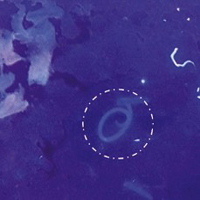Absence of anisakis nematodes in smoked farmed Atlantic salmon (Salmo salar) products on sale in European countries

Accepted: 12 June 2020
HTML: 22
All claims expressed in this article are solely those of the authors and do not necessarily represent those of their affiliated organizations, or those of the publisher, the editors and the reviewers. Any product that may be evaluated in this article or claim that may be made by its manufacturer is not guaranteed or endorsed by the publisher.
Authors
The increase of global demand of aquaculture products as compensation for the lowering of fishery sustainability, has shown a parallel awareness by the consumers on the importance of the safety and quality of fish products. Among these, salmon industry has reached a leading position demonstrating the negligible risk of presence of zoonotic helminths such as anisakid nematodes in farmed salmon. Despite the massive production of data in literature on parasitological surveys carried out on fresh salmon, no data are published on processed farmed salmon such as smoked products. In 2016, 270 fillets of smoked farmed Atlantic salmon (Salmo salar) and 13 smoked fillets from wild sockeye salmon (Oncorhynchus nerka) have been analyzed by visual inspection and UV-press method searching for the presence of anisakid nematodes. No parasites were detected in fillets from farmed Atlantic salmon, while 10 out of 13 fillets from wild salmon were positive for Anisakis simplex s.s. larvae. This first survey on the possible presence of anisakid nematodes in processed smoked salmon confirms that this risk in farmed Atlantic salmon products has to be considered negligible.
How to Cite
PAGEPress has chosen to apply the Creative Commons Attribution NonCommercial 4.0 International License (CC BY-NC 4.0) to all manuscripts to be published.

 https://doi.org/10.4081/ijfs.2020.8615
https://doi.org/10.4081/ijfs.2020.8615



